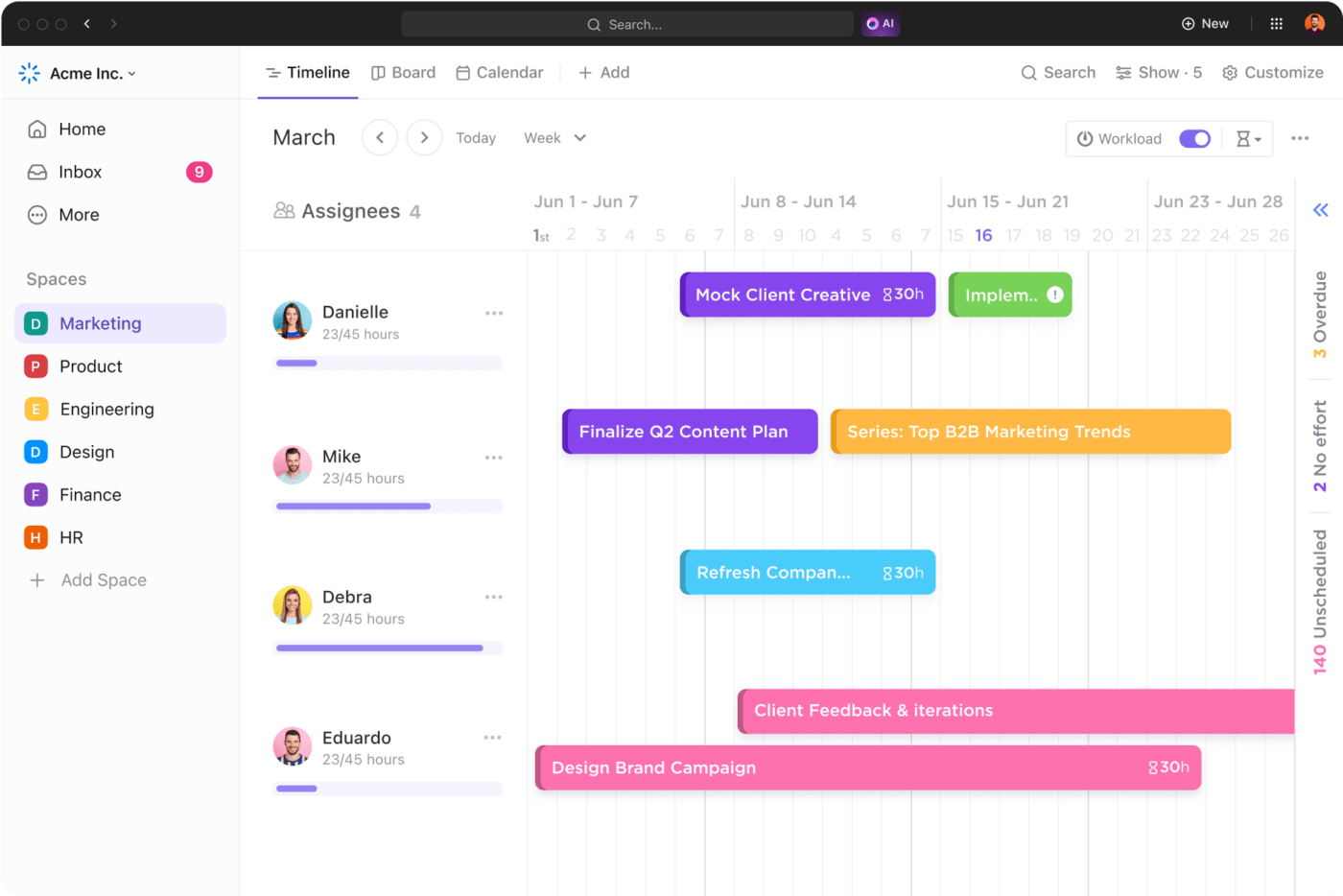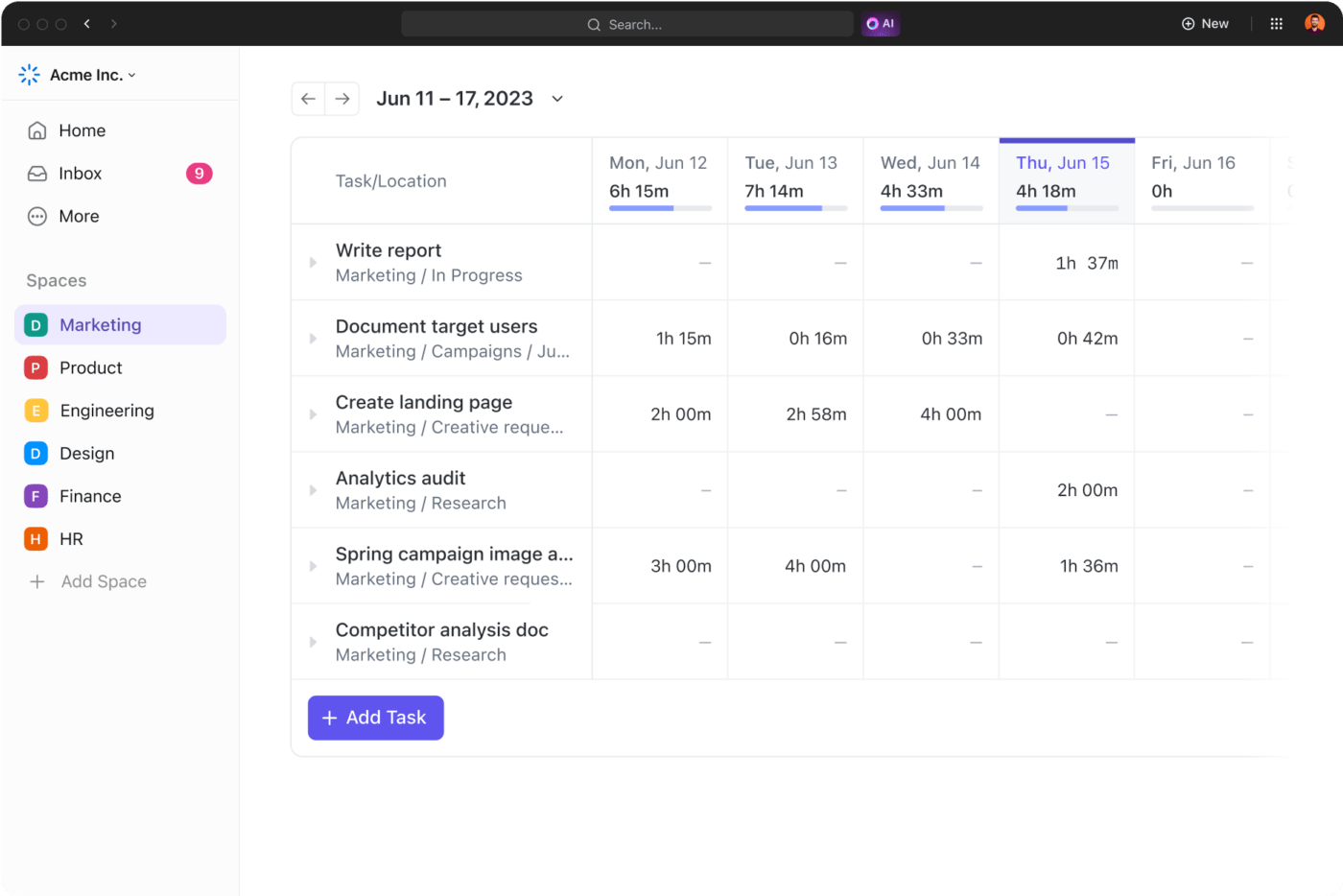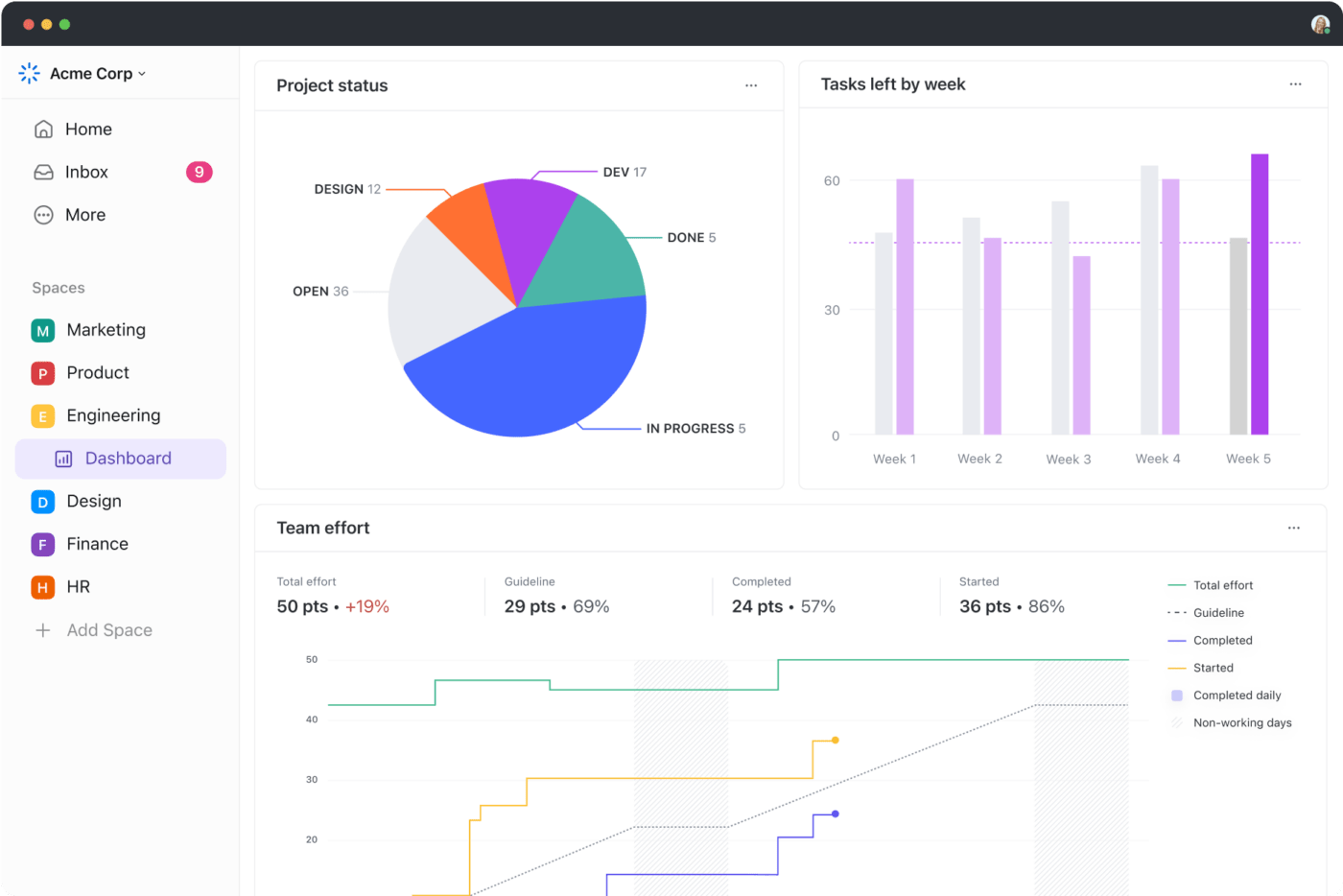How to Set Medium-Term Goals (With Examples)

Sorry, there were no results found for “”
Sorry, there were no results found for “”
Sorry, there were no results found for “”
We all have long-term life goals—become the CEO of a company, buy that dream home, travel the world, and so on.
The problem is that many of these goals end up on the ‘unattainable’ list because they seem too hard and too distant. We’re so bogged down by the ‘how’ of these goals that we never get around to actually pursuing them.
But great things take time. And breaking down these ambitious goals into more realistic milestones can help you make incredible progress.
Enter medium-term goals.
Medium-term goals act as stepping stones between your current situation and your long-term goal.
In this blog, we explore medium-term goals in detail and describe best practices for setting realistic and measurable goals that get you where you want to go.
A medium-term goal is an objective an individual or organization hopes to achieve in one to five years.
Medium-term goals are built on the outcomes of short-term goals and provide a structure to track progress toward long-term ambitions.
For example, a common long-term goal is to build wealth and enjoy a comfortable retirement. A medium-term goal to achieve this end would be to save money at a higher rate than you currently do, make wiser investments, and ascend the corporate ladder over the next few years.
The short-term goals involved in this endeavor could be to set aside a specific amount of money each week that goes straight into your savings or investment account.
Essentially, you need to set short-term goals to accomplish your mid-term goals, which in turn lead you to larger goals.
The ideal medium-term goals are adaptable to changes in goal planning and allow for sustainable, measured progress. For people and organizations alike, medium-term goals help maintain motivation levels, expand skills, and create tangible progress toward long-term goals.
Also read: Short-Term vs Long-Term Goals (Examples, FAQs)
Medium-term goals are an essential part of your planning strategy for several reasons.
Ideally, your planning strategy should have a mix of short-, medium-, and long-term goals. Here’s a quick comparison of all three types of goals below:
| Factor of comparison | Short-term goal | Medium-term goal | Long-term goal |
|---|---|---|---|
| Time frame | Immediate outcomes spanning a few months to a year | Complex objectives spanning one to five years | Strategic aspirations that extend beyond five years |
| Scope | Small tasks or projects | Larger tasks with dependencies | Broad objectives with significant outcomes |
| Planning requirements | Focused on immediate actions | Detailed planning with focused milestones | High-level planning with overarching strategies |
| Tracking | Frequent | Regular | Periodic |
| Resource allocation | Limited, for quick wins | Moderate, for meeting milestones | Strategic, for long-term aspirations |
Read More: One-Year, Five-Year, and Ten-Year Goal Examples for Long-Term Goal Planning
Your medium-term goals should be tailored to match your ambitions for personal and professional development.
Here are two examples of how you can use medium-term goals to break down your long-term personal and professional goals into shorter and achievable milestones.
Long-term personal goal: Publish a book of short stories
Long-term professional goal: Become a senior project manager
Typically, medium-term goals span a timeframe of between one to five years. They are ideal for accomplishing tasks that require detailed planning while ensuring enough leeway for periodic adjustments and course correction. They strike a balance between continued progress and operational realities.
Goal-setting can be done using multiple frameworks. But how can you tailor them to set medium-term goals? Here are a few ways:
The SMART framework refers to setting Specific, Measurable, Achievable, Relevant, and Time-Bound goals. It is a widely used goal-setting technique employed by individuals and organizations.
Example: An e-commerce company wants to launch a new mobile app.
Specific: As the product manager in that company, first define exactly what you aim to achieve. Answer questions like:
Measurable: Goals should be measurable. Define success metrics and specific criteria for measuring progress. Quantifying goals makes it easier to stay on track with your progress in developing and launching that feature.
Achievable: Evaluate goals and make sure they are realistically achievable, considering the existing resources. If launching the app on time requires more resources and people, adjust your budget to hire freelance developers or designers.
Relevant: Clarify ‘why’ you’re setting these goals and how they add value to the e-commerce company’s broader goals. Communicate the ‘why’ of the app to all relevant stakeholders.
Time-bound: Specify the project’s timelines. When do you expect to launch the app? Also, ensure everyone is in the loop about deliverable deadlines and milestones.
Once you establish these factors, you’ve set a well-defined SMART goal.
An example of a SMART Goal:
The product team will work with 4 freelance developers and designers to develop a new mobile application within Q1 of 2025. The app should increase user engagement by 30%. Initial market research and prototyping should be completed by Q3 of 2024. Since our users tend to place most of their orders through our existing mobile app, the new and revamped app will ultimately increase our overall user engagement and retention.
💡Pro Tip: Use ClickUp’s SMART Goals Template to break down complex goals into smaller steps and easily track their progress.
Milestone mapping divides the final goal into key stages with realistic timeframes. Let’s take the same example as above. The milestones for this medium-term goal would be:
💡Pro Tip: Use ClickUp’s milestone tracking software to visualize how many milestones you’ve completed against your planned schedule.
This is one of the most effective goal-setting techniques. We begin with the final goal and work our way backward to identify the steps needed to achieve it.
Backward planning for the same example we took earlier would look like this:
Final goal: Develop a new, interactive mobile application of an e-commerce company
💡Pro Tip: Use ClickUp’s project milestone templates to define key stages and checkpoints in your goal. The standardized framework provides a clear structure to define milestones.
The Objectives and Key Results (OKR) framework is another popular goal-setting tool to achieve quantitative and time-bound goals.
The framework involves a concise objective and up to three measurable outcomes that indicate progress toward the goal.
Objective: Deploy a new mobile app in two years to increase user engagement by 30%
Key results:
💡Pro Tip: Use ClickUp’s OKR Framework Template to create well-defined objectives and plan your goals’ outcomes and timelines. Organize tasks to best suit your workflow to ensure maximum productivity.
Setting medium-term goals is just the beginning. The real challenge is managing work and streamlining workflows so you can hit your milestones on time.
An all-in-one productivity tool like ClickUp combines multiple features to help you stay organized, efficient, and productive. Here’s how:
Ask yourself how you would distinguish between medium-term and long-term goals. What are your objectives, and what’s the purpose behind these objectives? How would you quantify your goals? What would be an ideal timeframe for these goals?
Define your goals based on these factors.
ClickUp’s AI tool—ClickUp Brain can help you answer some of these questions. ClickUp Brain is a virtual assistant that supports defining your medium-term goals based on the prompts you input. You can use it to set realistic medium-term goals and get started!
Here’s an example of ClickUp Brain at work.

💡Pro Tip: When defining organizational outcomes, work with your team to set quantifiable team goals that directly align with the overall strategic objectives. This way, everyone is on the same page, making progress easy to measure.
ClickUp Goals is the perfect tool to track goal progress. It lets you set your goals and define timelines and targets for each goal. These targets can be monetary, numerical, true/false, etc. By tracking these factors, you can see how much of the goal has been completed in a particular duration and keep yourself and your team accountable.
For instance, if your goal is to improve the overall productivity of your marketing team, here’s what different types of targets would look like:

Break down the big goal into multiple manageable tasks. You could consider a goal-tracking app to assign tasks to individuals or teams.
Or, manage your goals with ClickUp Tasks. Here, you can categorize your task types and add priority levels so that critical work is completed first. You can also add context to each task using custom fields to add relevant information such as ‘critical’, ‘high risk’ etc. Then, you can add custom statuses like To-Do, In-Progress, Under Review, or Completed to keep track of task progress and ensure you’re not falling behind.

For instance, tasks under the goal “Increase marketing-driven revenue by $100,000 over the next 16 months” would include:
Outline your plan of action using a roadmap to understand key milestones, steps, and timelines. Creating a roadmap establishes a clear path. Use the ClickUp Timeline View to plot your tasks on a flexible timeline. This gives you a clear, visual idea of what needs to be done and when. You can also identify key milestones along the timeline and adjust your plans to achieve them on time.

Goals are time-bound, and you don’t want to spend a lot of time setting up processes to achieve them.
This is where ClickUp’s template library will be your best friend.
Choose from over 1000 pre-defined frameworks to define your goals instead of building them from scratch.
For instance, ClickUp’s OKRs Template is an easily adaptable framework to help you set, track, and achieve your medium-term goals. The template offers four views—List, Board, Activity, and Calendar—to visualize your work. You can also choose from over seven different statuses to see how your tasks are progressing.
Read More: 11 Free Goal-Setting Templates for 2024
Improve your productivity by managing time efficiently. Allocate practical timelines for each task according to complexity so you don’t fall behind.
Track the time spent on tasks from any device using the ClickUp Time Tracking feature. Build custom time sheets to view how and where your time was utilized. Get deeper insights into your most productive hours and see how you can optimize your time for better efficiency.

Are your goals looking too complicated? Are there too many moving parts?
Break down your goals and connect each task with others to build a clear workflow that gets you closer to your objectives. For this, turn to ClickUp Mind Maps.

They say a picture is worth a thousand words, and ClickUp Mind Maps are perfect for visualizing and assimilating complex ideas. You’ll clearly see the connections between different tasks, how they relate to each other, and their combined impact.
Monitor your goals’ progress to identify trends, patterns, or deviations from the original goal and its timelines. Define success metrics that can help you track your goals against pre-decided milestones.
ClickUp Dashboards offers a comprehensive way to visualize your progress and get actionable insights. It acts as a single source of truth and offers you a comprehensive view of all your goals and their current status.

For instance, if your goal is to improve marketing engagement through influencer marketing, ClickUp’s campaign dashboard can help you track the effectiveness of your initiative. Track impressions by month, engagement by channel, the number of MQLs generated, and more.
Here are a few examples of personal, professional, and medium-term financial goals. We’ve also broken down each medium-term goal into sub-tasks that can help you achieve it.
| Objective | Transition into a new career within the next 18 months |
|---|---|
| Goal 1 | Do a thorough skills assessment test and research potential careers in the first three months |
| Goal 2 | Acquire new qualifications and skills as needed between four to nine months |
| Goal 3 | Build a professional network and look for opportunities to intern or gain experience in the target field from months 10 to 12 |
| Goal 4 | Create tailored resumes and portfolios for your job search from months 13 to 18 |
| Objective | Save $30,000 for a down payment on a house over the next three years |
|---|---|
| Goal 1 | Assess your current financial status. Open a high-yield savings account to grow savings faster |
| Goal 2 | Set a savings goal and decide how you’re going to reach it within the first three months |
| Goal 3 | Save money by reducing expenses, auto-transfer a percentage of your monthly income to savings accounts, and find ways to increase income from months four to eighteen |
| Objective | Obtain a leadership position within the next four to five years |
|---|---|
| Goal 1 | Define which position you want to achieve and evaluate your current skills for the role from months one to three |
| Goal 2 | Enroll in leadership development programs from months four to nine |
| Goal 3 | Actively seek new opportunities to gain experience and improve visibility from months 10 to 36 |
| Goal 4 | Apply for leadership roles, interview, and negotiate your terms from months 24 to 48 |
Mistakes to Avoid When Setting Medium-Term Goals
Well-defined medium-term goals are important to success. However, steer clear of these mistakes while setting goals:
❌Over ambitious: Goals should be practical and achievable. Avoid setting yourself up for failure with unrealistic goals
❌Lack of specificity: Be very specific in defining outcomes. Keep the timeframe and resources available in mind while setting goals
❌Lack of prioritization: Avoid trying to manage multiple tasks at once. Prioritize your activities based on importance and impact so that you can focus better
❌Not acknowledging milestones: With medium-term goals, every milestone marks success. Acknowledge and celebrate these milestones to stay motivated and focused on your goals
For most of us, our goals evolve as we do. As the circumstances around your life change, it’s prudent to review the progress of your mid-term goals regularly. Also, keep an eye out for bottlenecks or potential delays and adjust your goal timelines if required. Adapting a flexible approach will help you stay responsive to changes.
Here are some ways you can adjust medium-term goals with ClickUp.
Medium-term goals are stepping stones to your big-picture ambitions, breaking complex objectives into key milestones. They help you achieve steady, incremental progress, maintain focus, and allocate resources efficiently.
Whether you’re gunning for that corner office or saving money to buy a house, medium-term goals can give you the structure and clarity you need to plan for the future. Integrating medium-term goals into your long-term planning can help you navigate the complexities of your long-term goals and make meaningful progress toward your objectives.
If you’d like to explore how a tool like ClickUp can streamline your goal-setting process, sign up for free today!
© 2026 ClickUp